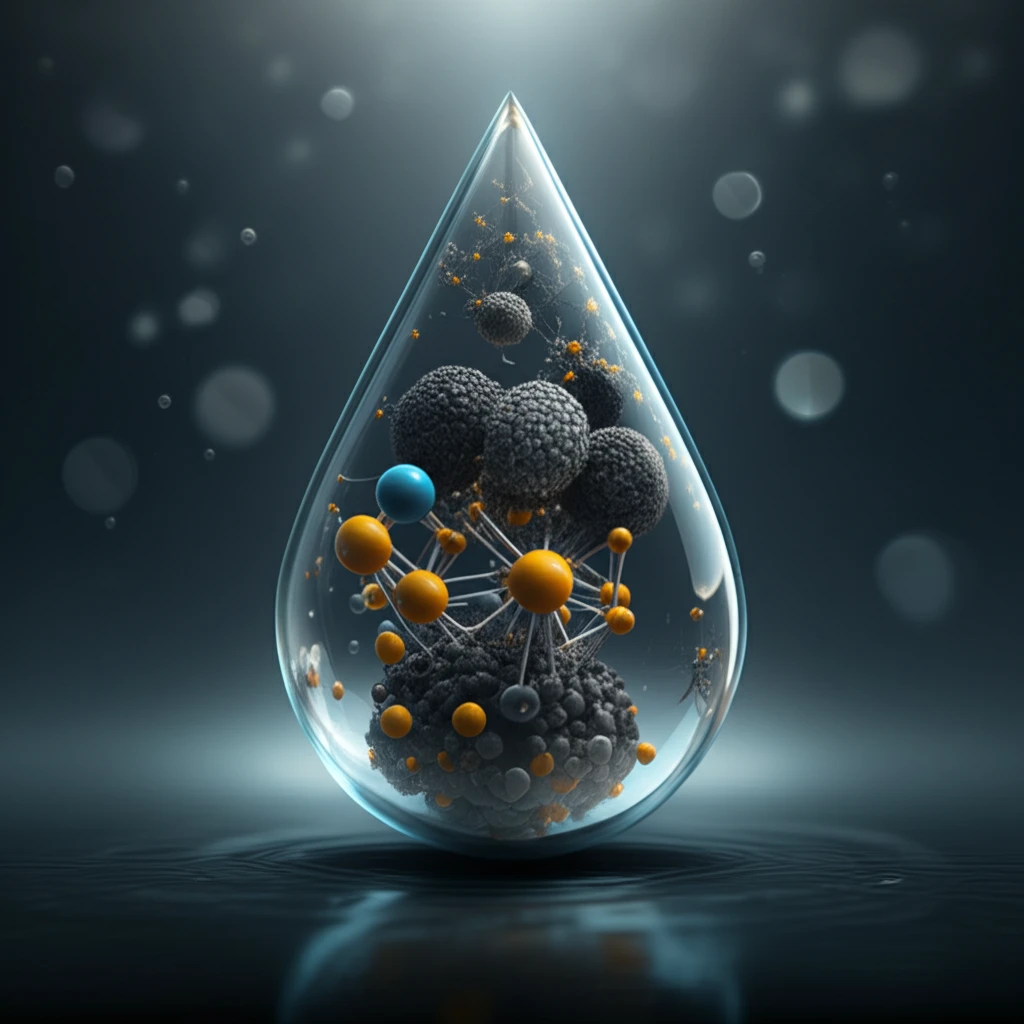
The Future is Clear: How Nanotechnology is Revolutionizing Water Purification
"Discover how nickel-activated carbon-TiO2 composites are paving the way for cleaner, more sustainable water solutions, using cutting-edge photocatalysis."
Clean water is essential for life, yet billions lack access to it. Traditional water purification methods often fall short in removing persistent pollutants, driving the need for innovative solutions. Nanotechnology offers a promising path forward, and one area showing real potential is the use of composite materials in photocatalysis.
Photocatalysis, using materials like titanium dioxide (TiO2), harnesses light to break down pollutants. However, pure TiO2 has limitations, primarily its need for ultraviolet (UV) light, which makes up only a small portion of sunlight. Researchers are exploring ways to enhance TiO2's efficiency and broaden its applicability, leading to the development of advanced composite materials.
One such innovation involves combining TiO2 with activated carbon and nickel, creating a powerful composite material. This combination leverages the strengths of each component, resulting in a more effective and versatile photocatalyst for water purification.
Unlocking the Power of Ni/Activated Carbon-TiO2 Composites

A recent study published in the Asian Journal of Chemistry details the creation and characterization of a novel nickel/activated carbon-TiO2 composite material. The research focuses on how this composite can efficiently degrade organic dyes, a common type of water pollutant. The composite is created by coating activated carbon with nickel, then supporting TiO2 on this modified carbon. This unique structure enhances the photocatalytic activity of TiO2, making it more effective at breaking down pollutants.
- Enhanced Adsorption: Activated carbon's porous structure provides a large surface area for pollutant adsorption, bringing contaminants into close contact with the TiO2.
- Improved Light Utilization: The addition of nickel and the composite structure may enhance the material's ability to utilize a broader spectrum of light, not just UV.
- Reduced Electron-Hole Recombination: Nickel acts as an electron trap, reducing the recombination of electron-hole pairs, which are crucial for the photocatalytic process.
- Synergistic Effect: The combination of all three materials creates a synergistic effect, where the overall performance exceeds the sum of their individual capabilities.
A Sustainable Future?
The development of Ni/activated carbon-TiO2 composites represents a significant step forward in nanotechnology-driven water purification. By combining the strengths of different materials, scientists are creating more efficient, sustainable, and cost-effective solutions for tackling water contamination. While further research and development are needed, this technology holds immense potential for providing clean water to communities around the globe.
